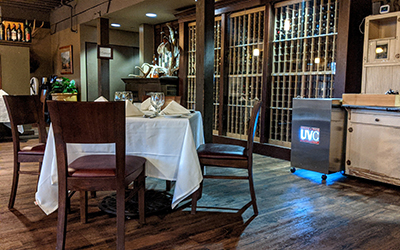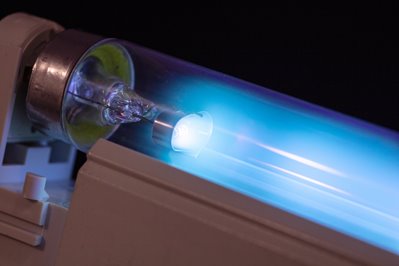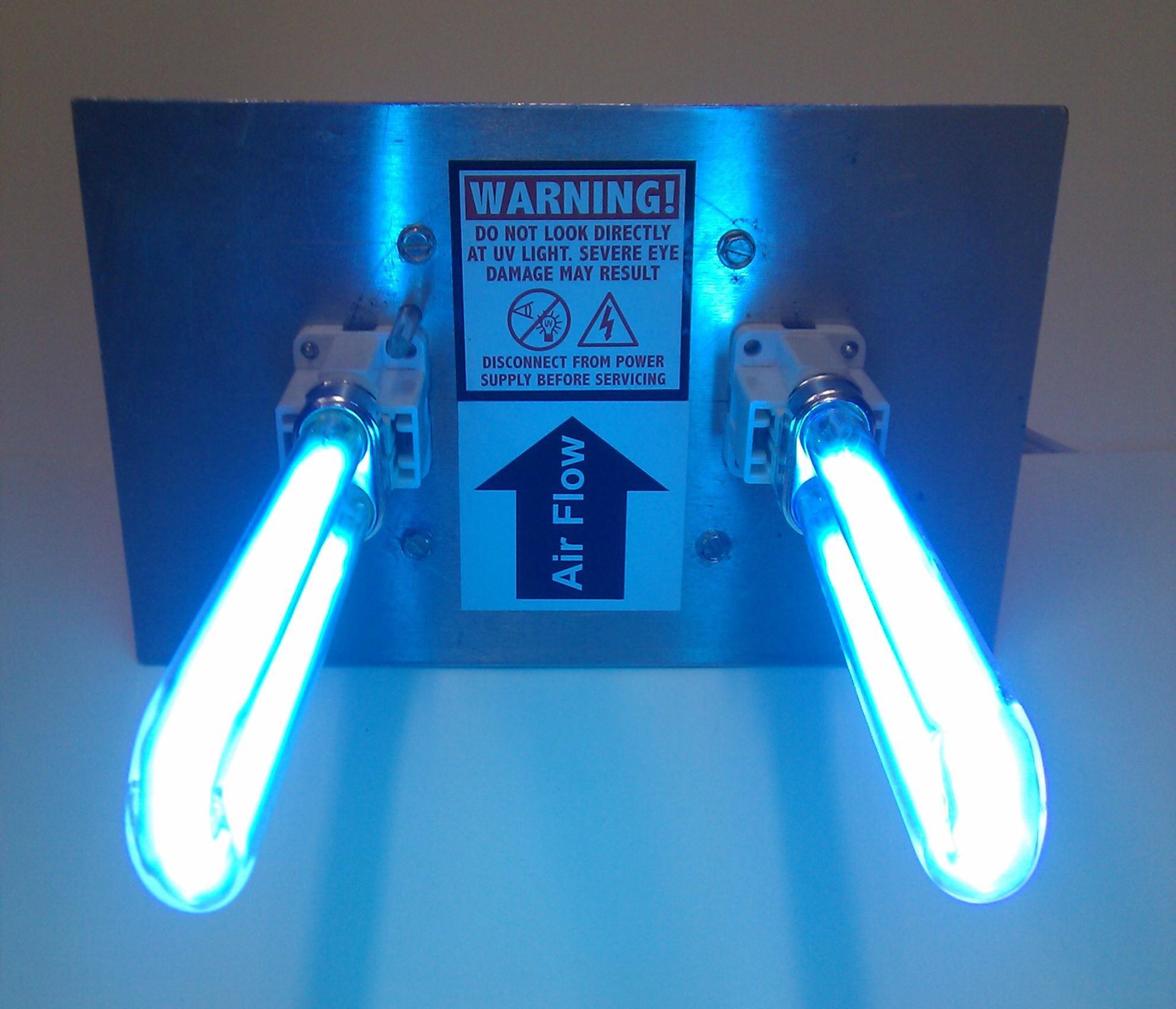 As cities and states begin to loosen capacity restrictions, SMACNA members are finding their ventilation expertise in demand as operators work to ensure patrons’ comfort and safety.
As cities and states begin to loosen capacity restrictions, SMACNA members are finding their ventilation expertise in demand as operators work to ensure patrons’ comfort and safety.
Many of the guests at Russell’s Restaurant & Loft in Bothell, Wash., probably don’t notice the two silver boxes strategically placed around the establishment. They’re nearly silent, and only take up a few feet of space.

But while restaurant patrons are focusing on their steaks and seafood, the equipment, called Hands-Free UVC, is using ultraviolet light and MERV-13 filters to purify the air in the dining room, removing bacteria and viruses, potentially including COVID-19.
The two units are on loan from Johansen Mechanical, an engineering and design firm based in Monroe, Wash. Company President Keith Johansen said he’s letting the restaurant use the equipment as a way to support a favorite local business.
For Russell’s, the unobtrusive units are a way to let customers know that it takes the pandemic and the safety of guests seriously, said Ryan Lowell, the restaurant’s wine and spirits director.
And that’s the idea, Johansen said. “(Guests) can physically see it, so they know that something is being done.”

Reassurances that businesses like Russell’s are doing everything they can to control COVID has become an essential part of re-engaging the nation’s economy. Ventilation has a critical role in reducing the spread of the spread of SARS-CoV-2, according to groups such as ASHRAE and the Centers for Disease Control and Prevention. The pandemic has sparked a keen interest among businesses and the public in the ability of HVAC systems to improve airflow and create safer environments.
That’s led to many SMACNA members becoming in-demand consultants to restaurants and local government officials as they try to ensure public safety while restoring economic activity.
To Angie Simon, P.E., SMACNA National president and CEO of Western Allied Mechanical in Menlo Park, Calif., it’s a welcome development and great positioning for the association’s member contractors and their workers.
“It really brings our profession to the forefront … and demonstrates how important we are,” she said. “It gives us new opportunities.”
Restaurants:
A Hard-Hit Industry
From shutdowns to strict capacity limits, few sectors of the economy have been more impacted by coronavirus and attempts to control its spread than the restaurant industry.

Russell’s, a restaurant in the Seattle area, uses a portable air purification system invented by Johansen Mechanical, to help improve indoor air quality.
However, even with increasing vaccinations and COVID cases trending down in much of the country, public health experts warn that indoor dining still presents risks. To help keep struggling restaurant owners afloat while also keeping the public safe, a number of cities and states have unveiled programs that encourage establishments to strengthen HVAC mitigation efforts. As an incentive, restaurants that complete the process may be able to increase capacity or advertise their certified status.
HVAC plays a critical role in many of these initiatives. In Michigan, the state’s MI COVID-19 Safer Dining program matches restaurants with a local HVAC contractor who evaluates the establishment’s existing system and recommends changes to improve airflow and reduce the chances of an outbreak.
Robertson Morrison Inc. of Ann Arbor, Mich., has performed several restaurant HVAC inspections and upgrades as part of the program. According to company President Brent Johnson, in many cases the work to bring restaurants into compliance isn’t extensive.
“In most stand-alone buildings or complexes, their HVAC systems are pretty adaptable to make the changes required, and they’re pretty inexpensive as well,” he said. “It can be as simple as increasing outdoor air ventilation to the building through an air-side economizer or increasing the filter efficiency … of the unit.”
A similar program was recently enacted in Philadelphia, where city officials are allowing restaurants that meet the health department’s enhanced ventilation standards to boost indoor dining from 25% to 50% capacity. The restaurant’s HVAC system must:
- Bring in at least 20% outside air
- Ventilate all of the dining room
- Use MERV-11 — or better — filters
- Provide at least 15 air exchanges per hour
System exhaust vents must be at least 6 feet from tables and chairs. In addition, performance must be certified by an HVAC contractor or self-certified by the restaurant owner.
Many owners realize that they’re not knowledgeable enough about HVAC equipment to assess the performance of a restaurant’s ventilation system, said Matt Sano, the president of Fisher Balancing Co. in Williamstown, N.J. That presents work opportunities for SMACNA members like his company.
Sano was involved in writing the performance standards the city is using for the program, and his client list includes a number of Philadelphia restaurants.
As part of the process, Fisher workers calculate an establishment’s exchange rate and its total airflow and evaluate the air-handling system. The cost for the service ranges from $1,500 to $3,000, Sano said.
Although Fisher has only performed certifications for a few restaurants so far, Sano said he believes the program can spur owners to fix long-overlooked ventilation issues.
“I think it’s an excellent idea, because they probably need to update anyway.”
Bipolar Ionization Spurs Interest as COVID-Fighting IAQ Solution
In Las Vegas, the tourism-dependent casino industry has been among the hardest hit by COVID-related shutdowns, capacity restrictions and the CDC’s recommendation to avoid nonessential travel.